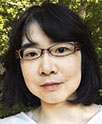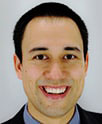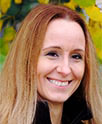 |
 |
 |
ORLANDO, Fla. — October 17, 2017 — The sensitivity and reliability of Droplet Digital PCR will be showcased in over a dozen presentations at the American Society of Human Genetics (ASHG) 2017 Annual Meeting, Orlando, Fla., October 17–21. The breadth and diversity of the posters and plenaries demonstrate the impact Droplet Digital PCR technology has had throughout genomics.
“It’s gratifying to see the applications we proposed for Droplet Digital PCR in 2011 go from being theory to reality,” said George Karlin-Neumann, Director of Scientific Affairs for Bio-Rad’s Digital Biology Group. “Researchers trust Droplet Digital PCR technology for absolutely quantifying gene expression, measuring cell-free DNA, detecting rare mutations, and many other uses.”
Featured Talks and Demonstrations
Rare Mutation Detection Maintains Stem Cell Integrity
Stem cell therapies that are being developed with induced pluripotent stem cells (iPSCs) must be evaluated for safety risks before they reach the clinic as mutations may develop in the process of reprogramming and culturing iPSCs. Researchers at Kyoto University, Japan, led by Professor Naoko Takasu, are using Droplet Digital PCR to identify cells whose mutations might harm a potential patient.
“We need to be able to identify any cancer-related de novo mutations, even if they occur at extremely low frequencies,” said Tomoko Takahashi, PhD, a member of Prof. Takasu’s group.
The task requires a sensitive and specific technology. In her presentation, Takahashi will share how her group developed and validated a Droplet Digital PCR assay to detect a mutant allele with frequency as low as 0.5%. Takasu’s group plans to use the method to identify rare structural variants and mosaicism among iPSCs and differentiated cell populations in future stem cell studies.
This poster (abstract #410) will be presented on Thursday, October 19, from 3–4 PM during the Gene Structure and Function session.
Cell-Free DNA Measurement Non-Invasively Detects Transplant Rejection
The standard method for diagnosing lung transplant rejection is invasive and expensive. To develop a far less invasive alternative, Andrew Young and colleagues at Washington University in St. Louis are using Droplet Digital PCR technology to quantify donor-derived cell-free DNA (cfDNA), a marker of tissue rejection in blood.
The study used a panel of probes that binds to specific single nucleotide polymorphisms (SNPs) and indels in human leukocyte antigen (HLA) molecules. The team showed that patients with biopsy-proven transplant rejection showed elevated levels of donor-derived cfDNA compared to patients without evidence of rejection.
“Because HLA types differ from each other by known SNPs and small indels, Droplet Digital PCR analysis may be helpful in determining whether a patient is experiencing lung transplant rejection. The process of collecting this data is far less invasive than transbronchial lung biopsy,” Young said.
Young will present his group’s findings at a special Bio-Rad Exhibitor Education Event on Thursday, October 19, at 12:30 PM.
Interrogating Cancer Target with Absolute Gene Expression Quantification
Droplet Digital PCR is empowering investigations into potential cancer therapeutics. A team at Umeå University in Sweden, led by Dr. Irina Golovleva, will present research on the KIF23 gene, which is upregulated in many cancers.
A mutated form of KIF23 causes a hereditary form of anemia known as CDA III, and researchers believe this could be due to the mutation’s effect on the alternative splicing of KIF23. Using CDA III as a model, Golovleva’s team is employing Droplet Digital PCR to understand how alternative splicing of KIF23 may also play a role in cancer.
“Our early Droplet Digital data suggest when the disease-causing mutation is present, expression levels shift, causing the anemic phenotype,” said Ann-Louise Vikberg, a PhD candidate in Dr. Golovleva’s group.
Making meaningful comparison of KIF23 expression levels across tissues is difficult to do using qPCR as it requires relative quantification of KIF23 with respect to housekeeping gene expression in each of the tissues. Droplet Digital PCR solved this issue with absolute quantification and enabled the Umeå team to directly compare expression levels between different tissues.
This poster (abstract #1693) will be presented on Wednesday, October 18, from 2–3 PM during the Developmental Genetics and Gene Function session.
Visit booth #244 to learn more about Droplet Digital PCR at ASHG.
All statements refer to Droplet Digital PCR’s use as a laboratory developed test. The technology is for research use only. Bio-Rad, Droplet Digital, and ddPCR are trademarks of Bio-Rad Laboratories, Inc. in certain jurisdictions.
About Bio-Rad
Bio-Rad Laboratories, Inc. (NYSE: BIO and BIOb) develops, manufactures, and markets a broad range of innovative products and solutions for the life science research and clinical diagnostic markets. The company is renowned for its commitment to quality and customer service among university and research institutions, hospitals, public health and commercial laboratories, as well as the biotechnology, pharmaceutical, and food safety industries. Founded in 1952, Bio-Rad is based in Hercules, California, and serves more than 100,000 research and healthcare industry customers through its global network of operations. The Company employs more than 8,350 people worldwide and had net sales exceeding $2 billion in 2016. For more information, please visit www.bio-rad.com.
This release may be deemed to contain certain forward-looking statements within the meaning of the Private Securities Litigation Reform Act of 1995. These forward-looking statements include, without limitation, statements we make regarding our development and launch of new products and our expectations regarding our products. Forward-looking statements generally can be identified by the use of forward-looking terminology such as “plan”, “believe,” “expect,” “anticipate,” “may,” “will,” “can,” “intend,” “estimate,” “continue,” or similar expressions or the negative of those terms or expressions, although not all forward-looking statements contain these words. Such statements involve risks and uncertainties, which could cause actual results to vary materially from those expressed in or indicated by the forward-looking statements. These risks and uncertainties include our ability to develop and market new or improved products, product quality and liability issues, our ability to compete effectively, and international legal and regulatory risks. For further information regarding our risks and uncertainties, please refer to the “Risk Factors” and “Management’s Discussion and Analysis of Financial Condition and Results of Operation” in Bio-Rad’s public reports filed with the Securities and Exchange Commission, including our most recent Annual Report on Form 10-K and our Quarterly Report on Form 10-Q. Bio-Rad cautions you not to place undue reliance on forward-looking statements, which reflect an analysis only and speak only as of the date hereof. We disclaim any obligation to update these forward-looking statements.
Press Contact:
Bio-Rad Laboratories, Inc.
Viresh Patel
925-474-8602
viresh_patel@bio-rad.com
CG Life
Ken Li
312-532-4675
kli@cglife.com
